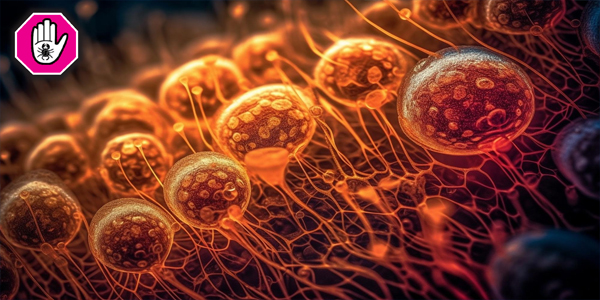Cancer is a broad term for a group of diseases characterized by uncontrolled cell growth and spread to other parts of the body. It can affect any part of the body and manifests in various forms, making it a complex and challenging condition to address. In this blog post, we’ll provide an overview of some of the most common types of cancer, their characteristics, and how they are typically treated.
Types of Cancer
Here’s a brief overview of some common cancers:
| Cancer Type | Description | Common Symptoms | Treatment Options |
|---|---|---|---|
| Breast Cancer | Cancer that forms in the cells of the breast. | Lump in the breast, changes in breast shape, discharge from the nipple. | Surgery, radiation therapy, chemotherapy, hormone therapy, targeted therapy. |
| Lung Cancer | Cancer that starts in the lungs. Often associated with smoking. | Persistent cough, chest pain, shortness of breath, coughing up blood. | Surgery, radiation therapy, chemotherapy, targeted therapy, immunotherapy. |
| Prostate Cancer | Cancer that occurs in the prostate gland, common in older men. | Difficulty urinating, pelvic pain, blood in urine or semen. | Surgery, radiation therapy, hormone therapy, chemotherapy. |
| Colorectal Cancer | Cancer that starts in the colon or rectum. | Blood in stool, persistent abdominal pain, changes in bowel habits. | Surgery, chemotherapy, radiation therapy, targeted therapy. |
| Skin Cancer | Includes melanoma and non-melanoma skin cancers, often related to UV exposure. | Changes in skin appearance, new growths, or sores that don’t heal. | Surgery, radiation therapy, chemotherapy, targeted therapy, immunotherapy. |
| Ovarian Cancer | Cancer that begins in the ovaries, affecting women. | Abdominal bloating, pelvic pain, difficulty eating or feeling full quickly. | Surgery, chemotherapy, targeted therapy. |
| Leukemia | Cancer of the blood cells, starts in the bone marrow. | Fatigue, frequent infections, easy bruising or bleeding. | Chemotherapy, radiation therapy, targeted therapy, stem cell transplant. |
| Lymphoma | Cancer of the lymphatic system, includes Hodgkin and non-Hodgkin lymphoma. | Swollen lymph nodes, fever, night sweats, weight loss. | Chemotherapy, radiation therapy, targeted therapy, immunotherapy. |
Detailed Overview
- Breast Cancer
- Description: Breast cancer originates from cells in the breast tissue, which can form tumors or lumps. It’s more common in women but can also occur in men.
- Treatment: Treatment depends on the type and stage of cancer. Options include surgery (lumpectomy or mastectomy), radiation, chemotherapy, hormone therapy, and targeted therapies.
- Lung Cancer
- Description: Lung cancer primarily affects smokers but can also occur in non-smokers. It is often diagnosed at a later stage due to the subtlety of early symptoms.
- Treatment: Treatment strategies may involve surgery to remove the tumor, radiation to target cancer cells, chemotherapy to kill cancer cells, and newer options like targeted therapies and immunotherapy.
- Prostate Cancer
- Description: Prostate cancer develops in the prostate gland and is typically slow-growing. It is one of the most common cancers among men.
- Treatment: Options vary from active surveillance for less aggressive cases to surgery (prostatectomy), radiation, and hormone therapy.
- Colorectal Cancer
- Description: This cancer starts in the colon or rectum and often begins as polyps that can turn cancerous over time.
- Treatment: Includes surgical removal of the tumor, chemotherapy to eliminate any remaining cancer cells, and radiation therapy for localized cases.
- Skin Cancer
- Description: Skin cancer is generally caused by overexposure to ultraviolet (UV) radiation from the sun. Melanoma is the most serious form.
- Treatment: Treatment may involve surgical removal of the tumor, chemotherapy for advanced cases, radiation therapy, and targeted or immunotherapies for specific types.
- Ovarian Cancer
- Description: Ovarian cancer starts in the ovaries and can be challenging to detect early. It often spreads before diagnosis.
- Treatment: Surgical removal of the ovaries and uterus, followed by chemotherapy, is common. Targeted therapies and hormone treatments may also be used.
- Leukemia
- Description: Leukemia affects the blood and bone marrow, leading to high numbers of abnormal white blood cells.
- Treatment: Treatments include chemotherapy to kill leukemia cells, radiation therapy to target cancer cells, and stem cell transplants to restore healthy bone marrow.
- Lymphoma
- Description: Lymphoma affects the lymphatic system, with Hodgkin lymphoma and non-Hodgkin lymphoma being the two main types.
- Treatment: Treatment options include chemotherapy, radiation therapy, targeted therapies, and immunotherapy depending on the specific type and stage of lymphoma.
Conclusion:
Cancer, while a daunting diagnosis, is a field of medicine with rapidly advancing treatments and improved outcomes. Understanding the different types of cancer can help in recognizing symptoms early and making informed decisions about treatment options. Regular screenings, a healthy lifestyle, and awareness of family history can also play crucial roles in prevention and early detection.
Stay informed, and consult healthcare professionals for personalized advice and treatment plans.


